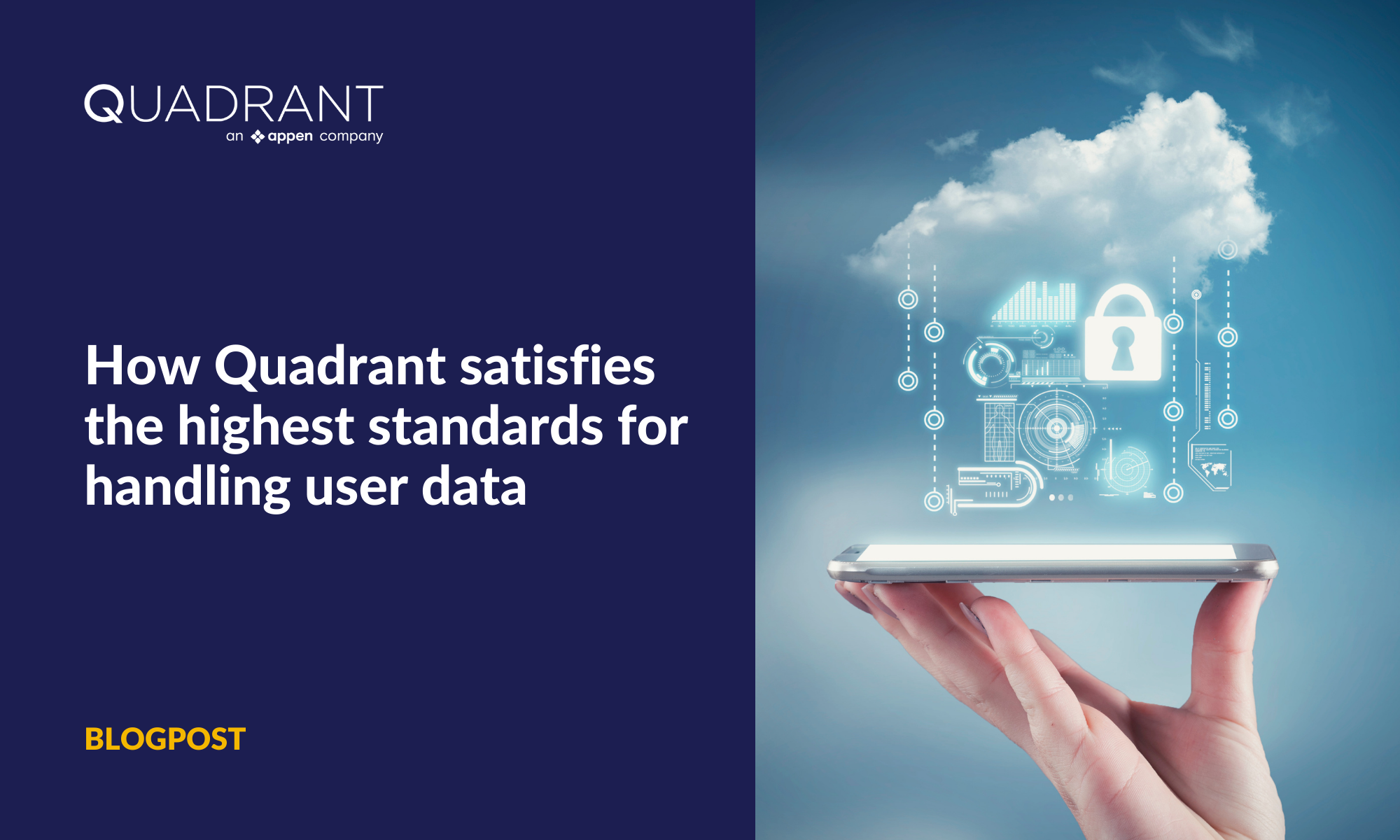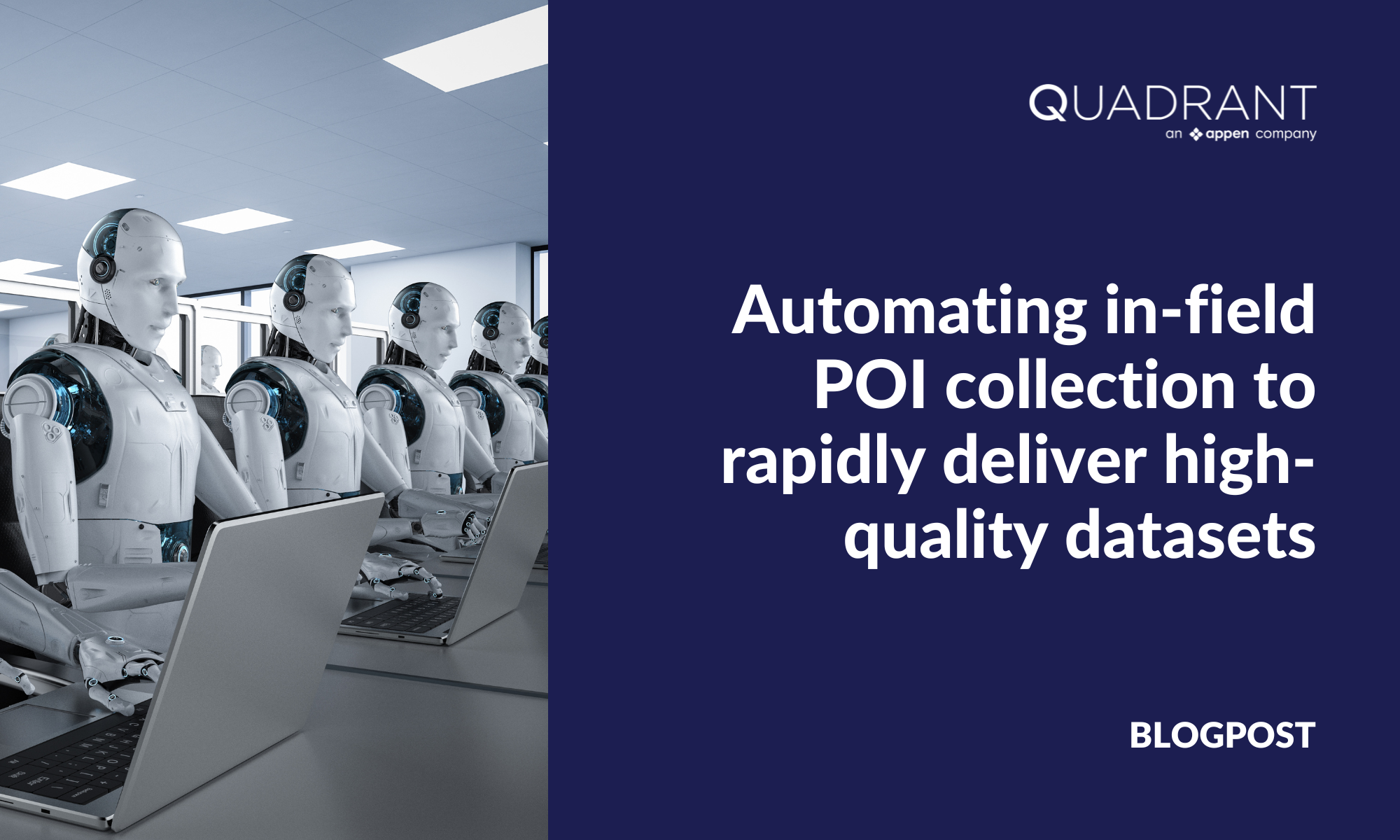From the onset, Quadrant’s corporate ethos has been predicated on the principle of transparency. As proponents of the laws and principles enshrined in data-privacy regulations, we ethically procure and process data to make sure we are operating within the boundaries established by these regulations.
Early on, our Consent Management Platform (QCMP) was registered as an IAB TCF-compliant CMP – which made us a valuable partner for publishers who wanted to monetize their apps by supplying consented and anonymized user data.
Recently, we became a IAB TCF’s v2.0 registered vendor - an accreditation wider than just QCMP, assuring our customers that we collect, store, and process data in accordance with the legal requirements of the GDPR.

In addition to enabling businesses to derive actionable intelligence for enhancing performance, data analytics holds the key to addressing many of the world’s pressing socio-economic issues. The market capitalization of the data economy in the EU and UK alone reached €440 billion in 2020. Mobile apps and websites are collecting vast quantities of consumer data for monetization purposes, which is why transparency around collecting, using, and protecting data is of the utmost importance.
Many people are wary about their participation in the data economy. A worldwide survey that included over 10,000 respondents in 2019 found that 40% of users believed that their personal information would be sold to third parties while 47% of users were afraid of security breaches.
As a leading supplier of geospatial data, Quadrant has implemented concrete measures to ensure that the privacy rights of users are preserved in line with leading data privacy frameworks like the EU’s GDPR. Here, we elaborate upon these measures and how they allow our customers to utilise location data while staying compliant with the data privacy regulations in effect in their jurisdictions.
Mobile Location Data
Quadrant collects anonymised mobile location data from multiple sources, including publishers that have integrated our location data Software Development Kit (SDK) into their apps. The location-related attributes collected by our SDK do not include any sensitive user information or Personally Identifiable Information (PII).
To ensure our mobility datasets are compliant with data privacy laws, we also offer publishers a free, complementary Consent Management Platform known as QCMP (which also comes in the form of an SDK). QCMP allows publishers to manage and store consent records on an immutable blockchain – thereby making sure said publishers are prepared in case of an audit. Moreover, QCMP helps publishers meet the criteria for in-app consent and disclosure pages necessitated by Google’s updated data privacy framework.
Transparent Data Supply Chain
Beyond providing a Consent Management Platform and not storing Personally Identifiable Information, we go to great lengths at making our data supply chain transparent. We do this by utilizing our own blockchain, Quadrant Protocol, which allows access, creation, mapping, and distribution of data products and services with authenticity and verifiability at its foundation.
Our location data ecosystem consists of three entities: suppliers (publishers), sources (mobile apps), and buyers (our customers). These entities are connected through ‘Data Smart Contracts’ which have a tree-like structure. In these contracts, each entity is represented as a node of a tree and the edges of trees represent the relationship between them. The whole data supply chain can be tracked transparently and immediately.
We establish provenance through ‘Data Stamping’, a process in which new datasets are stamped with a unique signature so that they can be traced. It occurs in two pathways (each of which are recorded as events / transactions on our blockchain):
- When a user opts in or opts out (from sharing data with a partner/publisher)
- When a supplier and a source are connected to a buyer. For example, if node A is a buyer, B is a supplier, and C is a source: A-B is one transaction and B-C being another transaction.
Quadrant Protocol has a user-friendly block explorer. It acts as the front end of the blockchain where all these transactions are displayed. Stated differently, our customers can see where their data is coming from, when they started receiving data, and so forth.
Point-of-Interest (POI) Data
Quadrant offers POI Data-as-a-Service through a proprietary, manual POI collection and verification platform known as Geolancer. Our services are sought after not just because of the accuracy and recency of our database, but also for the photos we collect for every POI.
These pictures, inevitably, contain Personally Identifiable Information (PII), such as faces, vehicle number plates, etc.
To make sure we abide by data privacy laws, our data science team built proprietary algorithms that scan POI data and images for PII, and censor this sensitive information before datasets are passed on to customers.
We undertake a three-step process to produce POI datasets without PII. After a user uploads an image to our server through Geolancer, said image is fed to our algorithm – which has a high degree of accuracy in removing the most commonplace PII types (facial images and vehicle number plates). Afterwards, the image is passed on to an annotation team that manually blurs any PII that might have slipped through our program. Finally, the original image is deleted from our servers and replaced with the new, PII-free image.
Our PII-removal / cleansing algorithm (which is based on Machine Learning) is continuously improving itself as our administrators exercise manual overriding inputs. Moreover, our data science team is actively working on improving the algorithm so that it can remove additional forms of PII.
At Quadrant, we place great emphasis on fulfilling the data collecting, storing, and processing requirements necessitated by the most stringent regulations. Our work - getting consented, anonymised mobility data through QCMP, removing PII from POI datasets, and creating a transparent and accessible location data ecosystem - has culminated in us getting an IAB TCF v2.0 vendor accreditation.




